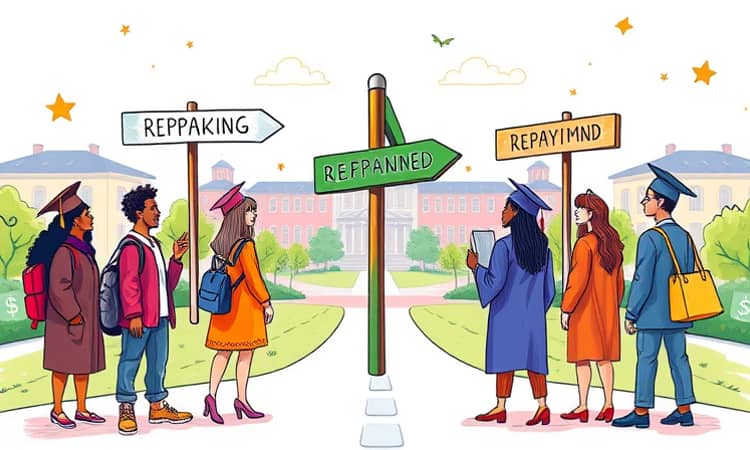The journey from college graduation to financial freedom often hinges on a single decision: choosing the right repayment plan. With federal loans, borrowers can select from fixed and income-driven options designed to fit diverse budgets and long-term goals. This guide will help you navigate each path and make an informed choice.
What Are Student Loan Repayment Plans?
Federal student loans are repaid through structured plans that determine payment amounts, loan terms, and potential forgiveness. Broadly, plans fall into two categories: fixed repayment options that follow a predictable schedule, and income-driven repayment (IDR) plans that adjust based on earnings and family size.
Understanding the mechanics of each plan type is essential for controlling costs, minimizing interest, and aligning payments with career and life milestones. Below, we explore how each option works and who benefits most.
Fixed Repayment Plans
Fixed repayment plans offer certainty through stable payment schedules and defined payoff timelines. They are ideal for borrowers who can manage consistent monthly payments and aim to minimize overall interest.
Standard Repayment Plan
Fixed monthly payments over 10 years define this plan, with a minimum payment of $50. Consolidation loans extend up to 30 years. Borrowers are automatically assigned to this plan unless they opt for an alternative.
Best for those who can afford higher payments and want to pay off debt quickly, the Standard Plan yields the lowest total interest paid over the loan’s life.
Pros: Stable schedule, fastest payoff, and minimal interest. Cons: Highest monthly obligation among federal plans.
Graduated Repayment Plan
Under this option, payments start lower and rise every two years. Terms span 10 years, or up to 30 years for consolidated loans, with a minimum $25 payment that must cover accruing interest.
This plan suits borrowers who expect their income to grow steadily. Early payments ease budget strain, while later increases align with rising salary. However, paying lower amounts initially means more interest accrues, resulting in a higher total cost than the Standard Plan.
Extended Repayment Plan
Extended plans spread repayments over 12 to 30 years, offering fixed or graduated schedules. They are designed for those with large loan balances seeking to reduce monthly payment dramatically over time.
Extended terms lower monthly bills, but extended timelines significantly increase the total interest paid. This trade-off works best when cash flow is tight but long-term costs are less of a concern.
Income-Driven Repayment Plans
IDR plans tie payments to a percentage of discretionary income, offering relief when fixed plans are unaffordable. Terms range from 20 to 25 years, and any remaining balance may be forgiven, though taxes might apply to forgiven amounts.
Payments set between 10%-20% of discretionary income and can be as low as $0. Annual income and family size recertification ensure payments reflect current financial reality.
Comparing Repayment Costs
Choosing between fixed and IDR plans involves weighing monthly affordability against total interest paid. Tools like the federal Loan Simulator can project monthly payments, total repayment, and eligibility for forgiveness programs.
For example, a borrower with $30,000 in loans under the Standard Plan pays approximately $339 per month and around $40,700 over ten years. Switching to an Extended Plan might lower payments to $150 monthly but increase total costs beyond $50,000 over 25 years.
Under SAVE, a borrower earning $40,000 annually with a household size of one could see a monthly payment of $93, with remaining balances forgiven after 20 years if unpaid. These scenarios highlight trade-offs between short-term relief and long-term expense.
Choosing the Right Plan
No single plan fits every borrower. To make a decision, consider factors like income, loan balance, career path, and forgiveness goals.
- Loan Size: Higher balances may benefit from extended or IDR options.
- Income Projection: Fast-growing salaries align with Graduated Plans.
- Forgiveness Goals: Public Service Loan Forgiveness requires IDR enrollment.
- Family Size and Expenses: Larger households reduce discretionary income.
- Long-Term Cost vs. Cash Flow: Balance lower payments with interest growth.
Public Service Loan Forgiveness
PSLF offers forgiveness after 120 qualifying payments under approved IDR plans while working full-time for government or non-profit employers. Note that Standard and Extended Plans alone do not qualify unless recertified under an IDR plan that meets PSLF requirements.
Carefully track employment certification forms and maintain accurate records to ensure payments count toward forgiveness.
Tools and Resources
Borrowers can access the following resources to make informed decisions and manage their loans:
- Federal Loan Simulator on StudentAid.gov
- Annual income recertification through your loan servicer
- Financial counseling services offered by many universities
Frequently Asked Questions
Can I switch plans anytime? Yes, you can change your plan online or via your servicer, but be aware of possible capitalization of unpaid interest charges and extended payoff timelines.
What happens if my income changes? IDR plans require annual recertification of income and family size, adjusting your payment accordingly.
Is forgiven debt taxable? Most IDR forgiveness is currently tax-free under recent legislation, but always verify with a tax professional.
Choosing a repayment plan is a personal decision that impacts your financial journey for years to come. By carefully evaluating fixed and income-driven options, leveraging federal tools, and understanding forgiveness pathways, you can craft a strategy that aligns with both your budget and your future goals.
References
- https://studentaid.gov/manage-loans/repayment/plans
- https://studentaid.gov/manage-loans/repayment/plans/standard
- https://www.nerdwallet.com/article/loans/student-loans/student-loan-repayment-plans
- https://financialaidtoolkit.ed.gov/tk/learn/repayment.jsp
- https://servicing.mohela.com/Servicing/LoanServicing/FederalStudentLoans.aspx
- https://finaid.org/loans/repayment/
- https://studentaid.gov/articles/compare-student-loan-repayment-plans-calculator/
- https://www.youtube.com/watch?v=cWcwcv6V4ck














